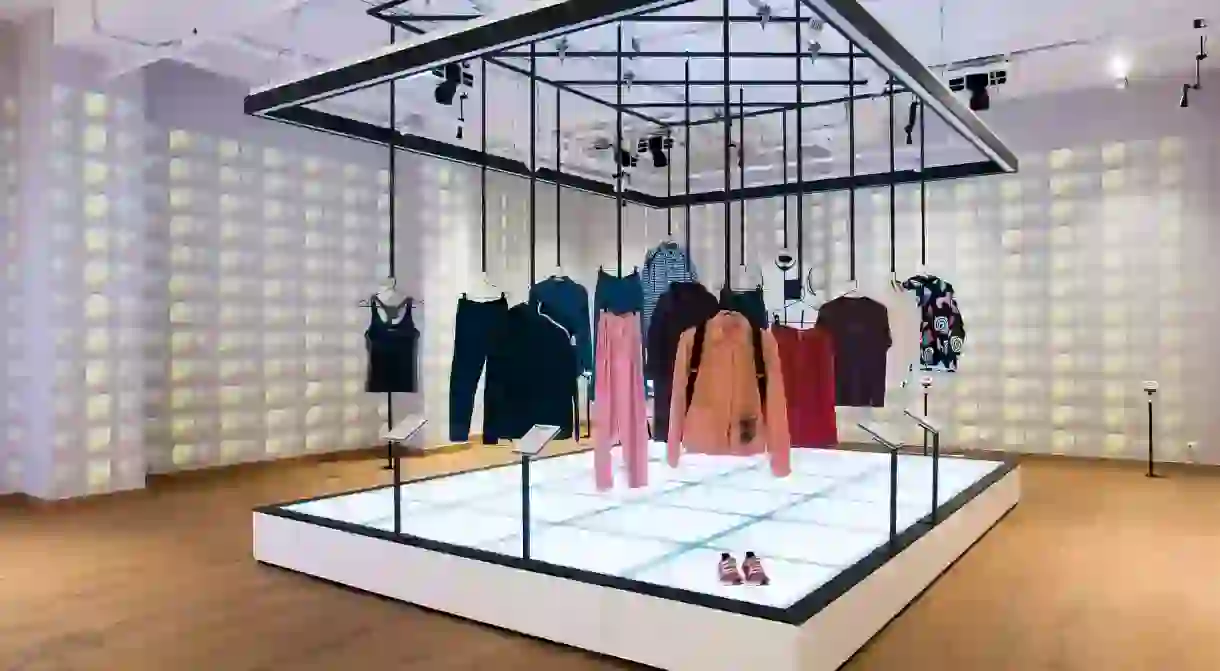Fashion for Good: The Amsterdam Museum Promoting Sustainable Clothing

By examining the industry’s impact on the environment and exploring alternative, eco-friendly manufacturing processes, a new museum in Amsterdam aspires to make fashion more sustainable.
The museum was created by sustainability initiative Fashion for Good and is located right next to Amsterdam’s busiest shopping street, Kalverstraat. Like its parent company, the project aims to inform the public and producers on fashion’s ecological side effects, while also suggesting innovative solutions to these issues. The whole experience centres around a series of interactive exhibitions, which present key facts and figures related to the global economy, the environment and consumer habits.

Spanning three floors, the museum retraces the history of clothing production and the evolving use of materials over time, retracing fashion’s past, present and future from start to finish. To encourage further engagement with the exhibitions, visitors are given bracelets containing RFID chips on arrival, which communicate with consoles scattered around the museum. When activated, these consoles display tips concerning positive fashion habits, such as ‘only buying clothes once per month’ or ‘washing laundry on cold cycles’. Before leaving, visitors can use these suggestions to create a personalised action plan involving small steps that have environmentally beneficial outcomes.

The museum’s basement level features a brief history of the industry, recounting important moments from the past 300 years that have shaped or revolutionised fashion in crucial ways. In the next room over, the museum turns its attention to t-shirts and shows how these unassuming garments cost serious amounts of labour, energy and water to produce, in turn, contributing to environmental problems related to fashion at large.

The museum’s ground floor explores current developments within ecologically-conscious fashion and houses a temporary exhibition space called the Good Shop where ready-to-wear items created by designers or studios working in this sector are displayed side by side. At the time of writing, the Good Shop’s selection centred around the theme “Splash: Rethinking the Role of Water in Fashion” and consisted of products made using recycled plastic bottles, fishing nets from ocean waste, salmon leather and much more – all created with care and consideration for water. Everything on display is available for purchase and the Good Shop’s collection will change every three months in order to delve into other themes.

Upstairs, the museum looks towards the future and presents a selection of cutting-edge innovations from the fashion world, which have the potential to change the industry for the better. Highlights here include a dress designed by Stella McCartney dyed blue with pigments grown by microorganisms and a vest made from mushroom root fibres. Due to its forward-thinking nature, this exhibition will change over time to ensure its contents remains suitably up-to-date.

“The purpose of this museum is to help visitors discover the stories behind their clothing and teach them what actions they can take and how they themselves can have an impact on the fashion industry”, explains Fashion for Good’s managing director Katrin Ley. “Through the combination of various elements in the museum, we try to inform and enthuse visitors in a positive way about sustainable, circular fashion innovations. We want to build a global movement to make all fashion a force for good.”

Though the project has worldwide aims, it feels right at home in Amsterdam thanks to the city’s many eco-conscious initiatives. “Amsterdam is really a hub for sustainable innovation”, says Katrin. “There is a wonderful ecosystem in terms of investors, startups and innovative sustainable brands here. There are lots of sustainably-driven brands based in the city and we have some in our programme, for example, MycoTEX, which has made a dress from mycelium (the ‘root system’ of mushrooms).”













